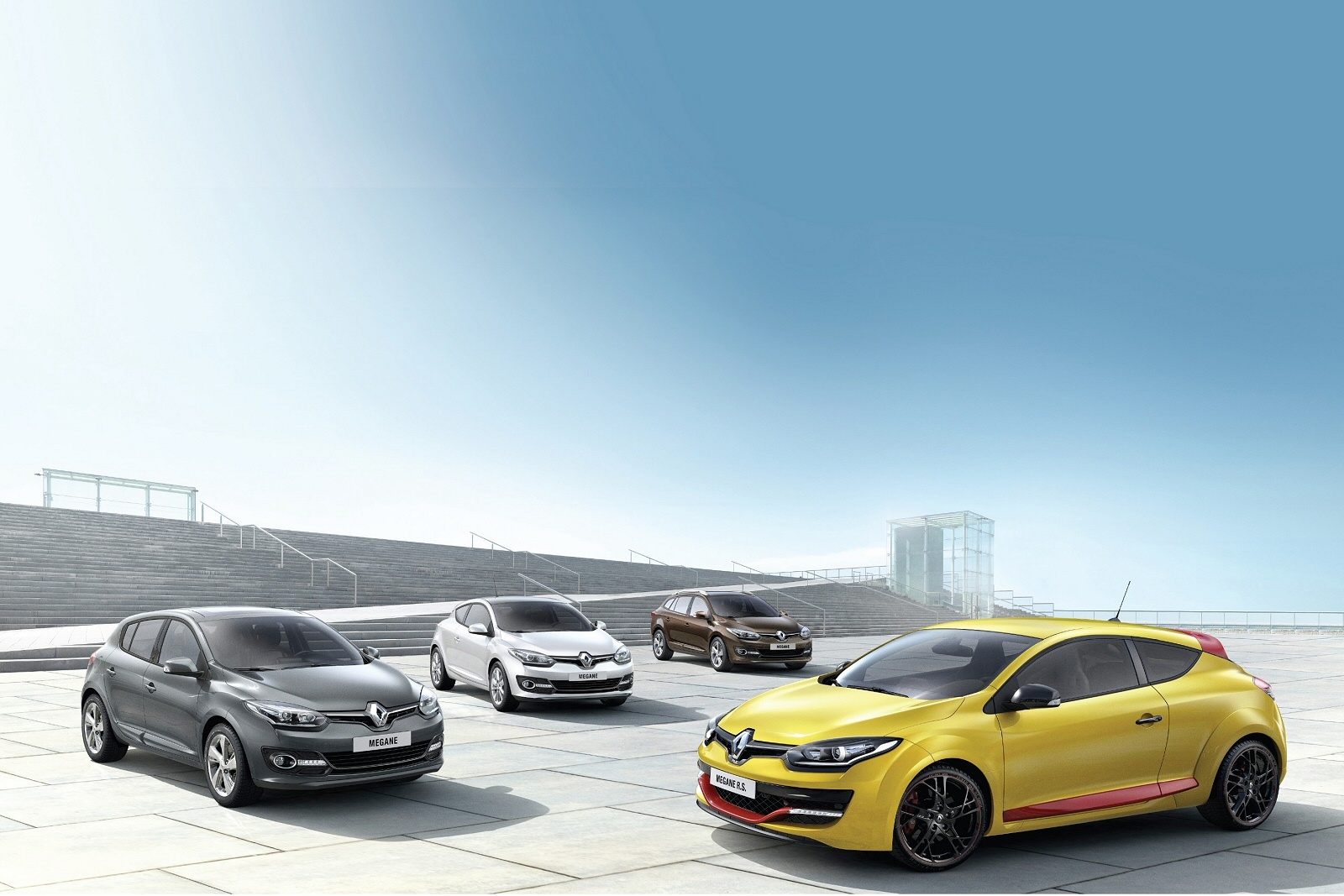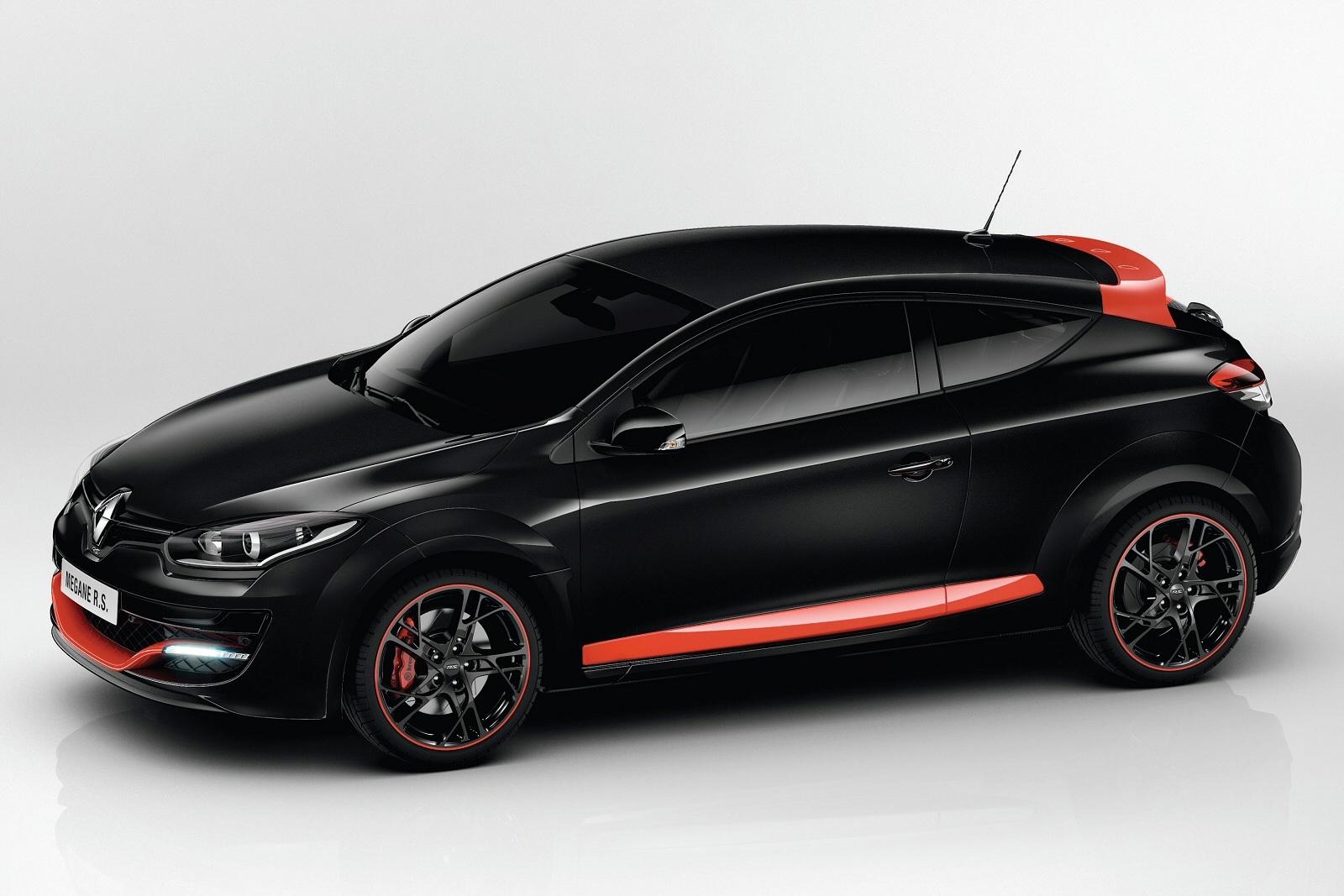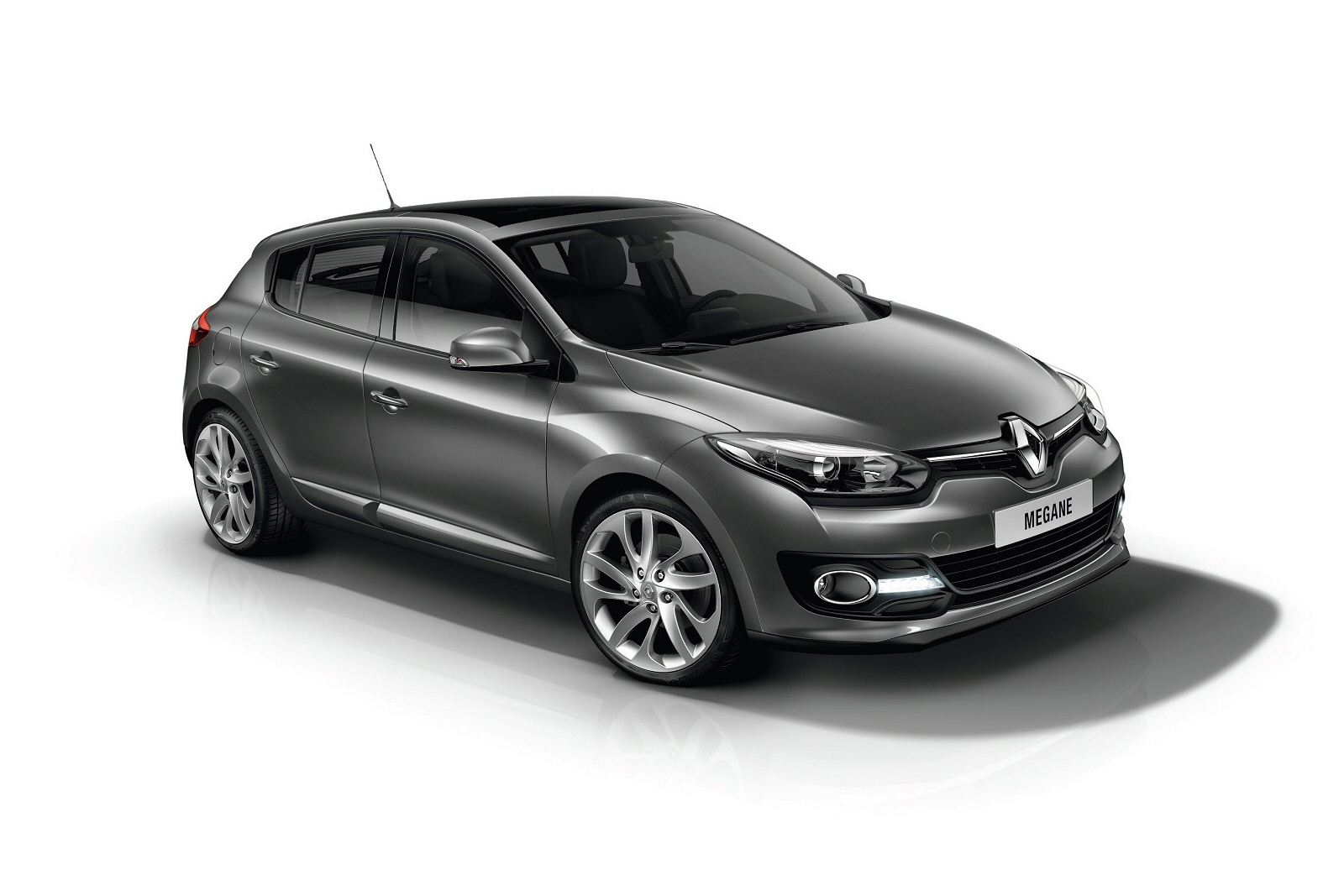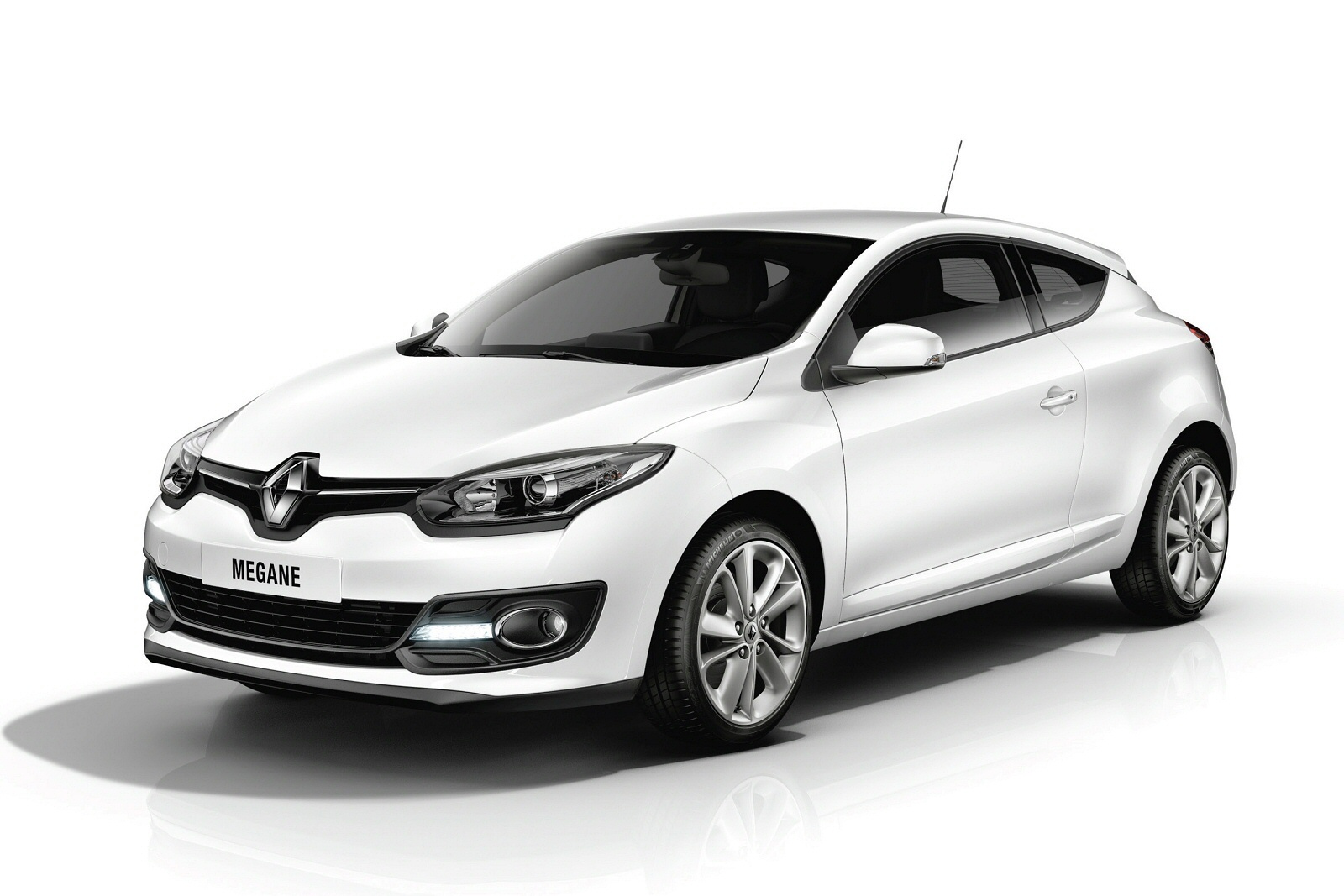Renault gives its third generation Megane the family face
and sets to work on a number of other detail changes.
It’s hard to find too many who’ll complain about the way a Renault Megane drives. On the face of it, the car seems wholly unexciting, with a conventional chassis, with struts up front and a torsion-beam rear end. There’s not the independent rear suspension you’ll get in a Focus or a Golf but Renault has been so clever in tuning the rear suspension that you’d actually never know.
There’s an elegance in designing simple things to work well and the Megane’s suspension is a case in point.
Engines? Well the range starts with the older 1.6-litre 108bhp petrol unit but you’ll probably prefer one of the diesels, now bearing ‘Energy’ badges to designate their supposed eco-friendliness. Most buyers choose the popular 107bhp 1.5-litre dCi engine but there’s also a 127bhp 1.6-litre dCi diesel variant.
Those are the usual options but also worth considering is the 1.2 TCe petrol engine, which also wears an ‘Energy’ badge. This unit might seem a tiddler but punches well above its weight with 113bhp at the crank.
Renault is also offering this engine in 127bhp guise in conjunction with the EDC (Efficient Dual Clutch) automatic transmission. The engineering department has re-tuned the engine by bringing in the turbo function faster and more frequently for enhanced performance. Performance junkies will know that the Megane Renaultsport 265 with its 2.0-litre 263bhp petrol engine is the finest hot hatch sensible money buys. That doesn’t look like changing anytime soon.
All Megane models get standard anti-lock brakes with electronic brakeforce distribution and brake assist, while stability control is now fitted as standard across the range.
The Megane range encompasses Coupes, Sport Tourers, Renaultsport versions and the familiar five door hatch.
These hatch versions are priced in the £17,000 to £23,000 bracket, which is about on par with most of its mainstream rivals but usefully undercuts vehicles like the Volkswagen Golf and, surprisingly, the Vauxhall Astra. There are four main trim levels – ‘Expression+’, ‘Knight Edition’, Dynamique TomTom and GT-Line TomTom.
Most customers, whether they be private or business buyers, go for one of the diesel models and Renault is putting increased focus on the Stop & Start variants, as they offer improved economy and efficiency figures. That said, Renault, like many other brands, is finding that petrol engines are staging a comeback and the TCe 115 petrol unit looks a decent engine, with its downsized 1.2-litre capacity and light weight combining with a respectable power output.
Equipment highlights include the Visio System which comprises a camera fixed to the windscreen behind the rear-view mirror. It automatically switches from main to dipped-beam headlights and also controls a Lane departure warning system. To assist parking manoeuvres, a camera located at the rear provides a precise image of the vehicle’s immediate surroundings and depicts its trajectory to help drivers adjust their line.
The good news with this latest Megane is that you don’t automatically need to go for a diesel if you want decent fuel economy. Take the TCe 115 petrol engine as an example. Equipped with Stop & Start technology that cuts the engine at idle, it makes the sort of numbers that not so long ago would have been respectable turbodiesel figures. You’ll manage a combined fuel economy figure in the region of 53mpg. Carbon dioxide emissions are down to 119g/km, while the car’s range is in the region of 620 miles, which is again similar to the distances associated with diesel models.
Prefer a diesel? The dCi 110 Stop & Start has proven very popular. This 1.5-litre unit records fuel consumption figures of 80.7 mpg and emits just 90g/km of carbon dioxide.
The 1.6dCi 130 Stop & Start makes a hefty 235lb/ft of torque, yet still manages a combined-cycle fuel consumption of just 70.6mpg, which is a 20% saving compared to the old 1.9 dCi 130 engine. CO2 emissions stand at just 104g/km.
Depreciation hasn’t been a strong point of Renault medium-range cars down the years but the latest Megane fights back with much improved residual figures. That’s thanks in no small part to a much improved focus on reliability.
Germany’s ADAC placed it near the top of its class when it came to mechanical durability, ranking it as “good” or even “excellent” over the service period between 2007 and 2012.
If you’re experiencing a little deja vu with the latest Renault Megane, you may not be the only one. This third-generation Megane was introduced with a brief to improve quality and boost refinement. In 2012 it was revised again to improve efficiency and integrate some clever electronics. Now Renault is improving the car again. Of course, a cynic may well wonder why Renault couldn’t get it right first time, but a more realistic view is that the company is not only reactive to customer feedback but also keen to invest money to further improve what was already a good car.
The Megane now looks a bit more extrovert and feels a bit more expensive. The car’s reliability should no longer be in question and there are no grumbles about the way it drives.
Economy and emissions are top drawer, as is safety. What more could Renault do to fettle the Megane further? The company is certainly devoting attention and budget in the right areas. It’s not a Golf, but it’s close in talent if not in price. That should be enough to cement its success.
Facts & figures
Model: Renault Megane range
Price: £17,000 to £23,000
Engine: 1.6-litre 108bhp petrol unit
Performance: 0-62mph in 10.5 seconds; top speed, 118mph (1.6-litre 108bhp petrol unit)
Economy: 40.9mpg (1.6-litre 108bhp petrol unit)
CO2 rating: 159g/km (1.6-litre 108bhp petrol unit)



